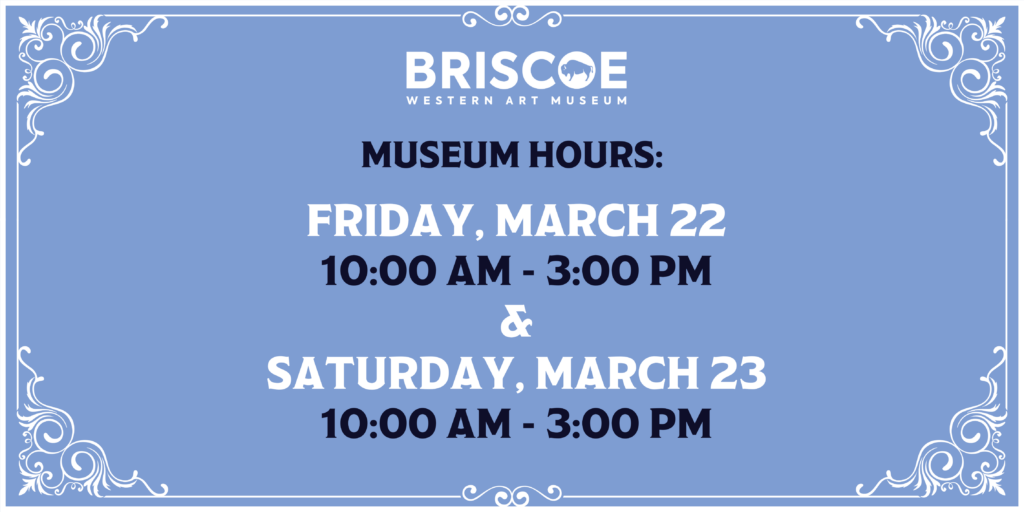Women of the West Gallery
At the core of Western art are the stories that artists create about life and culture in the American West. Women are a vital part of the regional narrative, whether they were women from Native tribes, Canary Islanders looking to elevate their social standing in New Spain, missionaries who worked to spread Christianity, Chinese finding their way in a new country, ranching women who raised cattle and horses in wild, open country, or numerous other women whose strength and vision are at the heart of Western culture. These works are a combination of images about, and by, women. Their work and unique perspectives tell stories of determined women whose work has expanded the field of Western American art.
Who Was Ruth McLean Bowman Bowers?
Ruth McLean Bowman Bowers was born in 1920 to Verna and oilman Marrs McLean and spent her childhood in Beaumont, Texas. She moved to San Antonio with her parents in the early 1930s. She graduated from St. Mary’s Hall in San Antonio and Finch College in New York City.
Influenced by her travels as a child, Bowers once told a friend that she knew she was a feminist from the time she was seven. She saw how women lived in different countries and in parts of the U.S. and worked to support many great organizations in San Antonio and beyond.
Women and the Work of the West
Although Hollywood has glorified the rugged version of men as stewards of the harsh American West, women have worked the frontier for hundreds, even thousands, of years. Indigenous women and Spanish-Mexican rancheras tended and tamed vast fields, traversed rugged landscapes with their dogs, hunted, and raised livestock.
Descendants of European settlers brought the ideology of “traditional” roles of men and women to the West. Moreover, for decades, family farms and ranches were handed down to men. Mechanization and technology have transformed the ranching industry, making the job of cowboy less about physical strength‒although female ranchers have that in spades—and more about business, animal husbandry, and the environment. Consequently, women have reclaimed their connection to the land. Traditional ranchers are aging out, and the brothers, sons, and grandsons who would have historically inherited a family ranch have opted to pursue less gritty work over the last twenty years.
Women as Artists and as Subjects
Art of Women
Western artists, most of them male, tell stories in which the presence of women often brings a sense of softness and stability to the unruly and harsh country. The Dressmakers by C. Michael Dudash focuses on a mother figure teaching a younger woman how to sew elks’ teeth onto a dress. The viewer is unaware of anything beyond the domestic setting and the bond that is being forged. In this way, male artists have shaped perceptions of women, their societal roles, their responses to danger, and even their sexuality to convey a specific concept of frontier life. Because of such male-centric representations of women in Western art, female artists have determined, like their historical counterparts, to shape the culture of the artistic landscape by controlling their own image.
Art by Women
In an artistic field that often emphasizes masculinity in the struggle with frontier conditions, women have fought to enter the artistic scene and have worked to reshape it. One of the most famous Western artists, Georgia O’Keeffe, represented her version of the West through a series of works that magnify skulls and flowers to a massive scale. Her focus on these subjects reflects the major forces at work in the southwestern desert—life and death. Other female Western artists have created work that depicts ranching life and culture, with an independent female subject in the forefront, equal in ability to her male counterparts.
Take a Tour of the Women of the West Gallery
Download our mobile app here
Or view the tour here
BECOME A MEMBER
Help us bring the spirit of the West alive by becoming a Briscoe Partner!
Click here to become a member!
SUPPORT THE MUSEUM
Governor Dolph Briscoe and his wife Janey envisioned a Museum that would preserve the stories and traditions of the American West.






